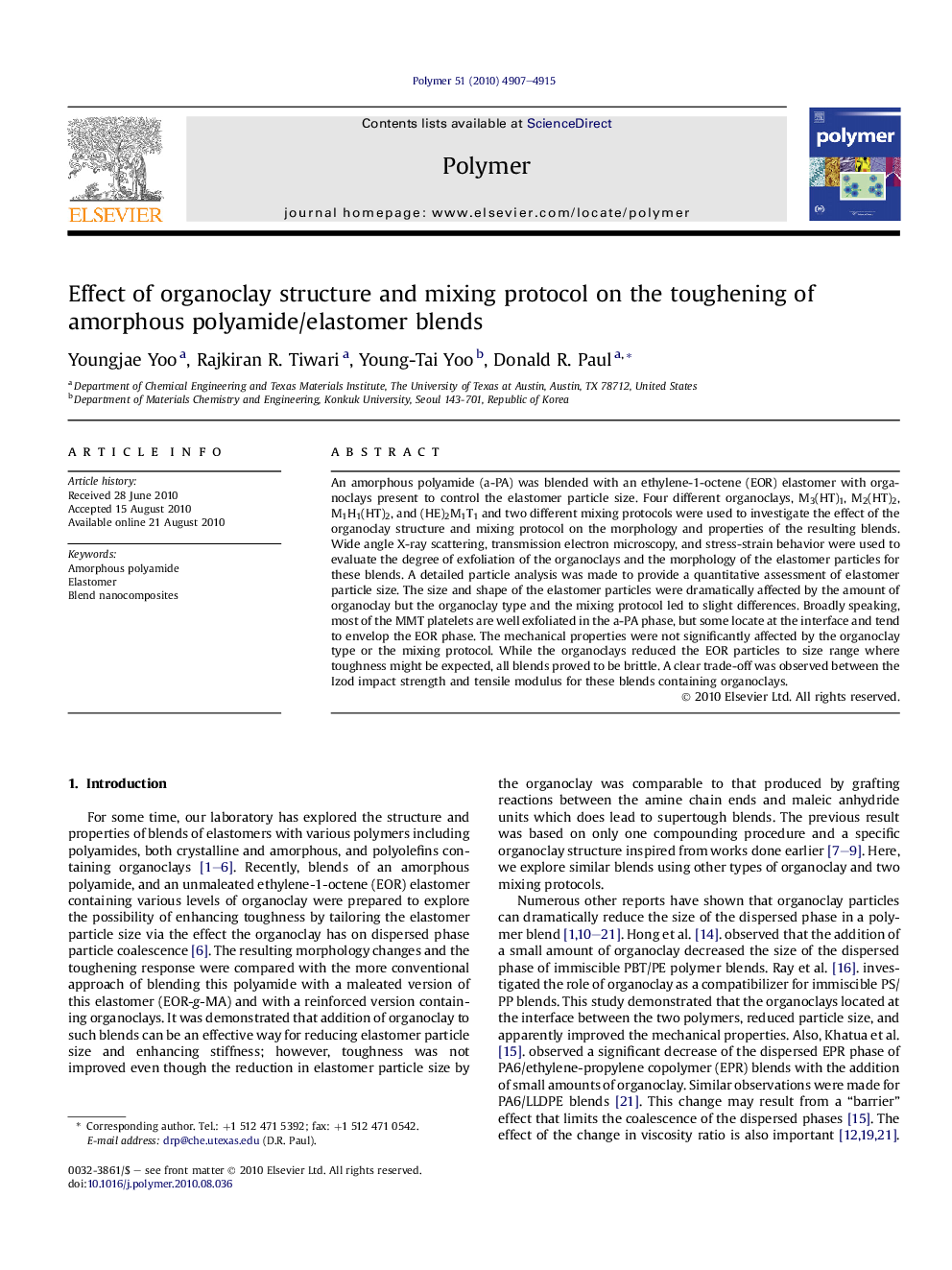| Article ID | Journal | Published Year | Pages | File Type |
|---|---|---|---|---|
| 5184956 | Polymer | 2010 | 9 Pages |
An amorphous polyamide (a-PA) was blended with an ethylene-1-octene (EOR) elastomer with organoclays present to control the elastomer particle size. Four different organoclays, M3(HT)1, M2(HT)2, M1H1(HT)2, and (HE)2M1T1 and two different mixing protocols were used to investigate the effect of the organoclay structure and mixing protocol on the morphology and properties of the resulting blends. Wide angle X-ray scattering, transmission electron microscopy, and stress-strain behavior were used to evaluate the degree of exfoliation of the organoclays and the morphology of the elastomer particles for these blends. A detailed particle analysis was made to provide a quantitative assessment of elastomer particle size. The size and shape of the elastomer particles were dramatically affected by the amount of organoclay but the organoclay type and the mixing protocol led to slight differences. Broadly speaking, most of the MMT platelets are well exfoliated in the a-PA phase, but some locate at the interface and tend to envelop the EOR phase. The mechanical properties were not significantly affected by the organoclay type or the mixing protocol. While the organoclays reduced the EOR particles to size range where toughness might be expected, all blends proved to be brittle. A clear trade-off was observed between the Izod impact strength and tensile modulus for these blends containing organoclays.
Graphical abstractDownload full-size image
